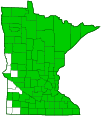nodding trillium
(Trillium cernuum)
Conservation • Wetland • Description • Habitat • Ecology • Use • Distribution • Taxonomy
Description |
||
Nodding trillium is a 8″ to 16″ tall, erect, perennial forb that rises on 1 or 2, sometimes 3, leafless stalks (scapes) from a short, stout rhizome. There is no central stem. What appears to be the central stem is actually a slender, hairless scape. There are no above-ground leaves. There is a whorl of 3 leaf-like bracts at the top of the scape. The bracts are broad, diamond-shaped or egg-shaped to almost circular, 2″ to 6″ long, 2⅓″ to 6″ wide, and stalkless or nearly stalkless. They taper gradually to a narrow point at the base, and taper gradually to a sharp point at the tip with concave sides along the tip. They are bright green and do not have red tones. The inflorescence is a solitary flower hanging on a stalk usually below the bracts. The flower stalk (pedicel) is ⅝″ to 1¼″ long and curves downward below the bracts or is angled between the bracts. The flowers are about 1½″ wide. There are 3 sepals, 3 petals, and 6 stamens. The sepals are green, lance-shaped to egg-shaped, and ⅜″ to 1 3 ⁄16″ long, as long or slightly shorter than the petals. The petals are thin-textured, white, rarely pale pink, ⅝″ to 1″ long, and ⅜″ to ⅝″ wide. They are oblong lance-shaped and come to a point at the tip with concave sides along the tip. They are usually strongly bent backward from just above the base, with more than ½ of their length extending behind plane of the sepal bases. However, this character is an unreliable field mark, as photos on this page indicate. The veins on the upper side of the petals are not conspicuous. The stamens are 1 ⁄16″ to ¼″ long, distinctly shorter than the pistil. The filaments are white, slender, and about as long as the anthers. The anthers are 1 ⁄16″ to ¼″ long and pale lavender-pink or lavender-gray. There is no floral scent. The fruit is a dark red, egg-shaped, fleshy, juicy berry. It is ½″ to 1⅛″ in diameter and contains many seeds. |
||
Height |
||
8″ to 16″ |
||
Flower Color |
||
White |
||
Similar Species |
||
Drooping trillium (Trillium flexipes) pedicel is longer, up to 4¾″ long; and is straight and stiff, not curved. The petals are thick-textured, not thin, and are conspicuously veined on the upper surface, appearing engraved. The sides of the petal along the tip are straight, not convex. The anthers are longer, 3 ⁄16″ to ¾″ long, and are creamy white or yellow, not pinkish-or grayish-lavender. The filaments are less than ½ the length of the anthers. |
||
Habitat |
||
Wet to moderate moisture. Woods. |
||
Ecology |
||
Flowering |
||
May to June |
||
Pests and Diseases |
||
|
||
Use |
||
|
||
Distribution |
||||
|
Sources |
|||
| 4/12/2023 | ||||
Nativity |
||||
Native |
||||
Occurrence |
||||
Common |
||||
Taxonomy |
|||
| Kingdom | Plantae (Plants) | ||
| Subkingdom | Pteridobiotina | ||
| Phylum | Tracheophyta (Vascular Plants) | ||
| Class | Liliopsida (Monocots) | ||
Order |
Liliales (lilies, supplejacks, and allies) | ||
Family |
Melanthiaceae (bunchflowers) | ||
| Tribe | Parideae | ||
Genus |
Trillium (Trilliums) | ||
| Subgenus | Trillium | ||
Subordinate Taxa |
|||
|
|||
Synonyms |
|||
Trillium cernuum var. macranthum |
|||
Common Names |
|||
nodding trillium whip Poor will flower whip-poor-will flower whip-poor-will-flower |
|||
Glossary
Bract
Modified leaf at the base of a flower stalk, flower cluster, or inflorescence.
Pedicel
On plants: the stalk of a single flower in a cluster of flowers. On insects: the second segment of the antennae. On Hymenoptera and Araneae: the narrow stalk connecting the thorax to the abdomen: the preferred term is petiole.
Rhizome
A horizontal, usually underground stem. It serves as a reproductive structure, producing roots below and shoots above at the nodes.
Scape
An erect, leafless stalk growing from the rootstock and supporting a flower or a flower cluster.
Sepal
An outer floral leaf, usually green but sometimes colored, at the base of a flower.
Visitor Photos |
|||||
Share your photo of this plant. |
|||||
| This button not working for you? Simply email us at info@MinnesotaSeasons.com. Attach one or more photos and, if you like, a caption. |
|||||
Bill Reynolds |
|||||
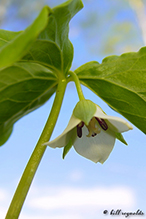 |
|||||
MinnesotaSeasons.com Photos |
|||||
Plant |
|||||
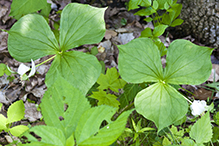 |
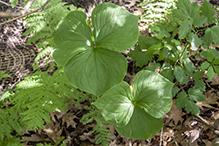 |
||||
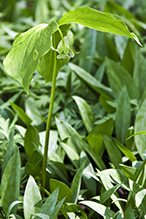 |
|||||
Flower |
|||||
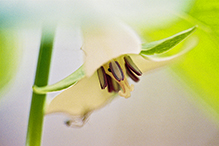 |
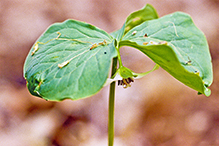 |
||||
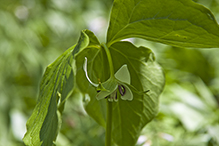 |
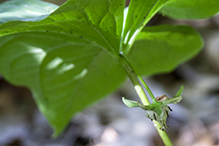 |
||||
Bract |
|||||
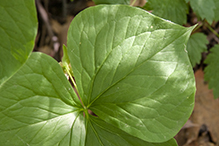 |
 |
||||

Slideshows |
||

Visitor Videos |
|||
Share your video of this plant. |
|||
| This button not working for you? Simply email us at info@MinnesotaSeasons.com. Attach a video, a YouTube link, or a cloud storage link. |
|||
Other Videos |
|||

Visitor Sightings |
|||||
Report a sighting of this plant. |
|||||
| This button not working for you? Simply email us at info@MinnesotaSeasons.com. Be sure to include a location. |
|||||
| Bill Reynolds 3/10/2014 |
Location: St. Louis Co. MN |
 |
|||
MinnesotaSeasons.com Sightings |
|||||

|
Created: Last Updated: © MinnesotaSeasons.com. All rights reserved. |
